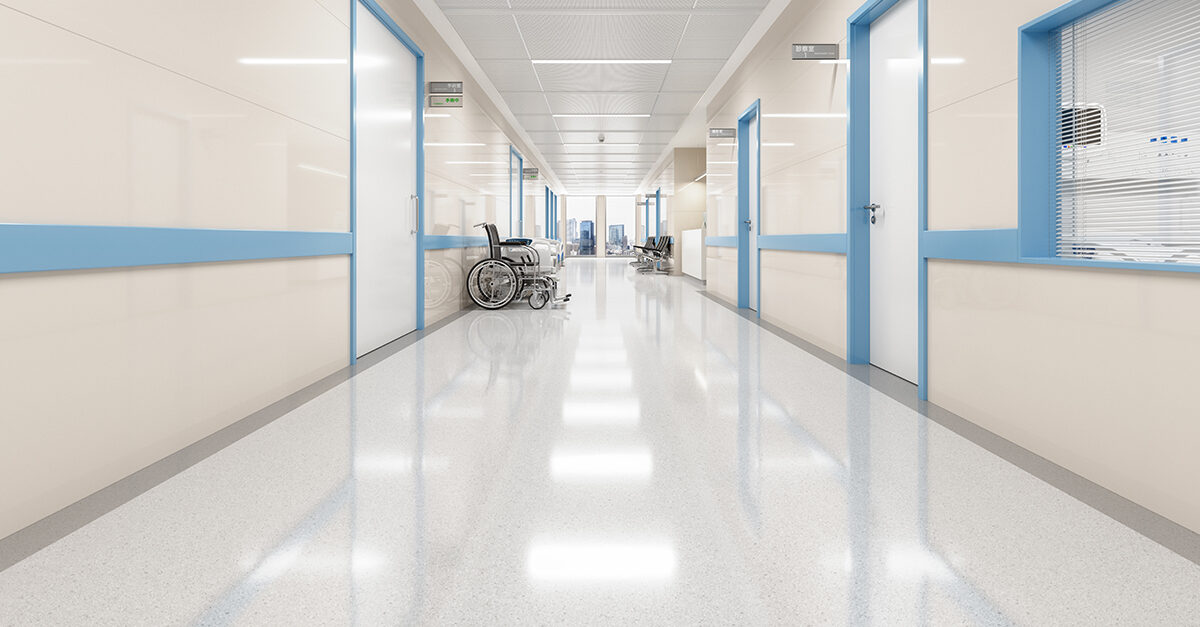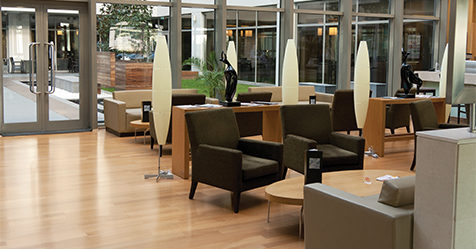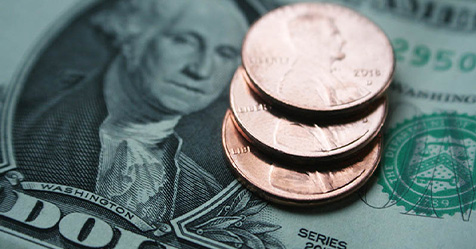As cleaning professionals turn their attention from COVID-19-related disinfecting back to routine maintenance, one task taking the forefront is restoring the gloss of finished vinyl composition tile (VCT) floors. This year, however, presents some challenges for floor maintenance. The freeze in Texas last February impacted the supply chain, including the supply of polymers, a key ingredient in the production of polymer-based floor finish.
The results of this impact are rising prices, potential floor finish shortages, and a need for cleaning professionals to reevaluate their floor care processes. In the past, chemical stripping was a popular option for regular maintenance of VCT floors. As technology has developed and new tools—such as orbital scrubbers and surface preparation pads—are available, it is time to rethink how to maintain VCT floors.
Let’s begin comparing these processes by looking at floor finish in general: what it is, what coats of floor finish look like, and what we are maintaining. Then we’ll compare the traditional process of chemical stripping with “top scrub and recoat,” a process that has been around for a while but involves new tools to make it more efficient and cost effective.
Floor finish basics
Finish properly applied and maintained on a VCT floor creates a protective layer against abrasion and damage, allowing the floor to last for decades. Floor finish is typically applied in four to six layers, with an average layer as thick as the cellophane on a package of cigarettes.
Floor finishes are rated by the amount of “solids” they contain, which refers to the amount of material left on the floor after the coat dries. Most finishes have a solid content of 18% to 25%. This means if you apply one coat of 25% solid floor finish, 75% of the material you apply evaporates during the drying process.
A good rule of thumb to determine the minimum number of coats to apply is to divide the percentage of solids your floor finish contains into 100. Thus, a 25% solids floor finish would need a minimum of four coats of finish, but an 18% solids finish may need a minimum of five to six coats.
You also need to consider whether the floor is new or if the finish has been removed. In these cases, the first layer may settle into the pores of the floor depending on the porosity of the substrate. Ultimately, appearance expectations determine the number of coats the floor needs.
Strip and refinish
In the “strip and refinish” method, cleaning technicians use a chemical to strip all of the finish off the floor and then reapply finish to build back the layers of protection. This process is labor-, chemical-, and water-intensive. Technicians mop chemicals that break down the finish onto the floor. They must keep the floor wet throughout the process, and then scrub it with a low-speed floor machine to break up the floor finish for removal.
Technicians scrub the finish and the chemical into a slurry, which they remove with a wet/dry vacuum, revealing any areas that need to be rescrubbed. Once all the finish has been removed, they neutralize the floor with an acidic rinse to counteract the alkalinity of the chemical stripping agent, then rinse it with clean water so it is finally ready for new layers of finish.
At the heart of this approach is the belief that all the floor finish must be removed to maintain the appearance. However, a floor that is regularly maintained in a manner that matches the foot traffic usually sustains damage to only the top few layers of finish. If four to six coats of floor finish are initially applied, only the top one to two layers are damaged. This means most chemical stripping jobs remove floor finish that is in perfectly good shape.
Top scrub and recoat
Although the top scrub and recoat method has been around for decades, the tools to accomplish this job have improved significantly. In the past, technicians used auto scrubbers, blue or green pads, and a neutral cleaner—or a slightly more alkaline detergent— to scrub the finish. This removed the damaged coats but left the base layers intact. Once cleaned and dried, floor finish could be applied immediately.
The old method of top scrubbing required technicians to make numerous passes with the auto scrubber to achieve the desired results. Regardless, this method saved a lot of labor and was much simpler and safer for cleaning technicians.
Today, you can accomplish the top scrub and recoat process with orbital scrubbers that are more productive than auto scrubbers using blue or green pads. Results of the top scrub and recoat process compared to chemical stripping are virtually indistinguishable in gloss and appearance, but without the labor costs, chemical costs, safety concerns, and waste stream concerns.
Top scrubbing with an orbital scrubber and a surface preparation pad eliminates the need for any chemical or water, which creates a safe and dry surface for the cleaning technician to work on. Effective orbital scrubbing systems can remove one coat of finish in one pass. After making one to two dry passes, technicians can vacuum or scrub away the pulverized remains of the damaged finish so the floor is ready for the new layers of finish. While the number of coats needed will vary based on the traffic and the number of coats that were damaged, one to two coats is normally sufficient to restore the desired gloss level of the floor.
Considering the budget, appearance, and cleanliness expectations cleaners are currently facing—combined with the current labor shortage—this could be the right time to switch from chemical stripping to top scrubbing and recoating. A new approach to maintaining VCT floors could make a tremendous difference for your organization this year.




